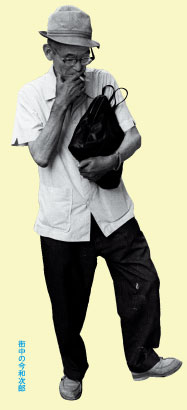"Modernologio" Now: Kon wajiro's science of the Present


Born in Hirosaki, Aomori Prefecture, Kon Wajiro (1888-1973) is known as the founder of Modernologio, an approach to thinking about the present world based on close observation, recording, and analysis of changes in the cityscape and the lifestyle of people of Tokyo as it rapidly developed into a metropolis during the early Showa period (1926-1989). Kon’s heritage also includes valuable research on minka (traditional Japanese houses), in which he became interested while participating in research conducted by the Hakuboukai (White Grass Roof Society), a group led by Yanagita Kunio, the father of Japanese folklore studies.
Kon was also an architect and designer who engaged in the Barrack Decoration Movement’s efforts to paint the emergency housing, known as barracks, built in Tokyo following the Great Kanto Earthquake of 1923; constructed experimental housing to make life easier for people living in areas with heavy snowfall; and designed cooperative workplaces for rural villages. Following World War II, he was the founder of the new academic disciplines of Lifestyle Studies and Clothing Research that focus on everyday life. Kon's breadth of interests reflected his own way of life: traveling back and forth between cities and villages to observe a wide range of lifestyles, always open-minded and carefully observant, with the ultimate goal of working with others to create new and better lifeways for the future.
The Exhibition “Kon Wajiro Retrospective”, held at the Aomori Museum of Art from October to December, 2011, and at the Shiodome Museum from January to march 2012, was the first-ever comprehensive retrospective of Kon Wajiro introducing his unique artistic career through sketches, photographs, designs, architectural drawings, and other materials meticulously selected from the vast Kon Wajiro Collection housed in the Kogakuin University Library. In addition to these materials, this Minpaku Special Exhibition “Modernologio Now: Kon Wajiro’s Science of the Present” introduces the heritage and progress of Modernologio in Minpaku research using Minpaku’s own collections.






